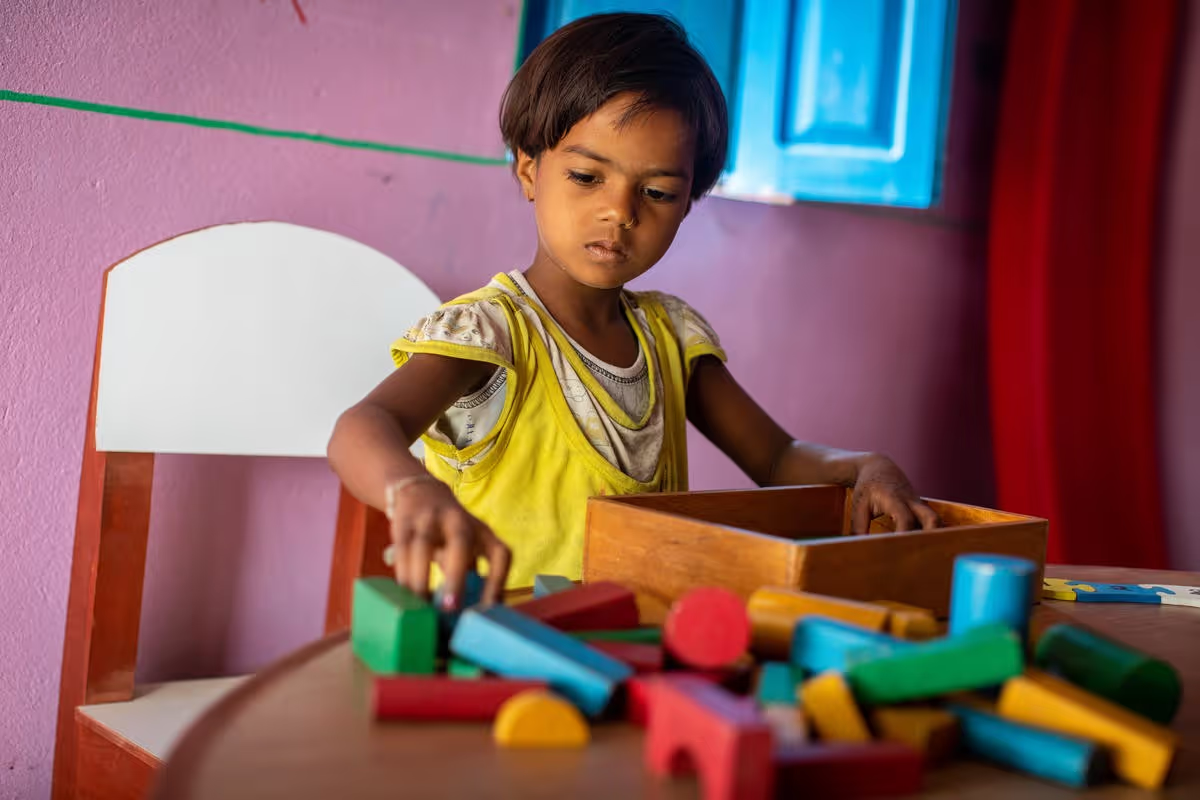Creativity in children and organizations: the predictors are the same

This guest blog was co-authored by Helen Moestue and Charley Allegar, Save the Children*
What are the three key predictors that cultivate creativity in both children and organizations? A recent report by Save the Children reminds us of the common principles that we all can apply at home, at school or at work.
Save the Children works to ensure that all children survive, learn and are protected against violence. To achieve such an ambitious goal, the organization must transform great ideas into ground-breaking results. One of its internal innovation funding mechanisms, the Sponsorship Innovation and Learning Fund, has been running for 11 years, dispersing more than $3 million across 43 projects in 20 countries. Last year, we commissioned an external evaluation of the Fund to find out which of the projects had worked and why. The results were fascinating.
The evaluators were able to distill the “secret ingredient” of many of the successful innovations and spotlight the weaknesses of those that had failed. In doing so, they highlighted ways in which Save the Children could further improve as an agency. But strikingly, to any parent or educator reading the report, the findings invited parallels between what sparks creativity in organizations and in children. Here are three key factors that stood out:
1. Time
Time is the most precious of resources to foster creativity, the evaluation found. Innovation projects were more likely to perform well if led by individual champions who combined passion with dedication, often for years on end.
Mediating effects came from evidence-generation and partnership-building, both of which are time-consuming. This is because iterative research, evaluation, and relationship-building are slow and laborious processes.
In fact, the authors found innovation projects falter more often from lack of staff time than lack of staff effort, and that without the commitment of time, promising projects are vulnerable to turnover.
These results echo what’s long been known in child development, that children thrive on unstructured, self-directed, imaginative play. Blocks of time for free play is fundamental for learning and imagination and core to Save the Children’s work in Early Learning and Education.
2. Autonomy
Freedom and autonomy are well-known predictors of individual creativity, which in the humanitarian sector is often referred to as “ownership”. While ideally ownership is shared between staff at the various offices, the evaluation found ownership by the country office was more important than at the head office, especially early phases in the innovation process.
Unsurprisingly, projects were more likely to get off the ground when national staff felt a sense of autonomy and proprietorship over their first program pilots. The same applies to children.
Experts have long encouraged parents and teachers to maximize children’s free choice and let them to take the responsibility that goes with freedom. Without independence and decision-making power, neither children nor employees truly possess their progress nor gain the intrinsic motivation to move it forward.
3. Diversity
Spontaneous, adaptable and non-linear processes — along with diversity in teams and organizations — are thought to foster curiosity and creativity. Our evaluation found that the most successful innovations were those that had a diverse set of stakeholders and were flexible enough to work in multiple contexts.
Innovators bolstered adaptiveness by conducting formative research, monitoring pilots closely, and adopting a “toolkit” design with a menu of optional components. Likewise, children are born with a natural ability for “divergent thought” — the seeking to generate multiple possible answers to problems — an ability that tends to decline with age, often a result of adults telling children they’re “wrong”.
To promote original thinking, employers may benefit from regular brainstorming, promoting diversity in thought and partnerships, and celebrating mistakes and unconventional ideas.
Applying the principles
Consciously and unconsciously, these principles have underpinned much of Save the Children’s program design (promoting children’s autonomy, participation in free play and divergent thinking) and the program development process (providing staff with time, autonomy and diversity).
With its light bureaucratic processes, the Sponsorship Innovation and Learning Fund itself provides Save the Children staff with time, resources, and autonomy to tweak and tinker with programming while generating evidence to support scaling, enabling them to dedicate themselves over longer periods, iterating as they go.
Moreover, Save the Children have applied the above principles when developing the most successful family of Basic Education and Early Childhood Care and Development projects — all funded by the innovation fund.
Their collective impact extends through many external partnerships — with World Vision for Literacy Boost, with Pakistan for Numeracy Boost and Bhutan for Building Brighter Brains — which in turn has brought substantial reach outside of Save the Children.
Each of these projects have been backed by multiple, rigorous, causal studies.
Go on, read the report. The findings are intuitive, revealing and hopeful. Innovation can be cheap and processes can be light, which is good news for the aid industry. And whilst there is no magic formula to fostering creativity, there may be some general principles we can all follow — educators, children and managers alike.
* Disclaimer: The views, thoughts and opinions expressed by the bloggers are theirs alone and do not necessarily reflect the opinions, viewpoints or policies of Elrha.
This blog originally appeared on the Save the Children website.
Stay updated
Sign up for our newsletter to receive regular updates on resources, news, and insights like this. Don’t miss out on important information that can help you stay informed and engaged.
Explore Elrha
Learn more about our mission, the organisations we support, and the resources we provide to drive research and innovation in humanitarian response.